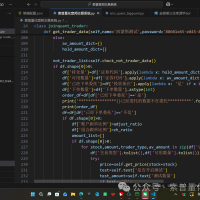CoinMinutes Approach to Creating a Welcoming Crypto Community
The crypto world has a real problem with being too hard to get into. Despite more people getting curious about it, the weird lingo, technical stuff, and sometimes snobby communities scare newcomers away. I've watched my smart friends - lawyers, doctors, engineers - get totally lost trying to follow crypto talk.
CoinMinutes is fixing this mess by building a community that makes crypto make sense without dumbing it down. We've rethought how to talk about this stuff and support people who are learning. Though I'll be the first to admit - we weren't always great at this. Our first guide back in 2020 was just as jargon-filled as the stuff we were trying to improve!
How We Break Down Learning

We teach crypto bit by bit instead of overwhelming people with everything at once. We call this our building-block approach, where we lay groundwork before piling on the hard stuff.
At CoinMinutes, we do this through a few learning stages:
- Starting with familiar comparisons (think of blockchain like Google Docs that everyone can see but nobody can mess with, not just some "distributed database")
- Showing practical stuff with guardrails (setting up your first wallet, with safety tips)
- Connecting to real life (how DeFi is like traditional banking, but different)
- Getting to the complex stuff only after you're ready (like the nitty-gritty of different consensus systems)
When teaching about how blockchains reach agreement, we started with something people already get: how groups make decisions (voting, finding middle ground, following a leader). Only once that clicked did we jump into proof-of-work versus proof-of-stake.
Our approach works for most folks, but we know everyone's different. Some people want to dive straight into the technical weeds, while others need hands-on practice to really get it.
Think about how you learned the last tough subject you tackled - what clicked for you? That'll tell you a lot about how you might want to approach learning crypto.
Useful Reference: https://pinetbook.com/coinminutes
Making Crypto Language Make Sense
Crypto terms are a nightmare for newcomers. What the heck are "non-custodial," "gas fees," or "liquidity pools" supposed to mean? These words confuse people and make them give up. At CoinMinutes, we use language that makes sense without oversimplifying.
Check out the difference:
Typical explanation: "DeFi protocols utilize smart contracts to enable trustless interactions with counterparties, eliminating intermediaries through immutable code execution."
Our take: "DeFi (Decentralized Finance) applications use self-executing digital agreements (smart contracts) that carry out transactions when conditions are met. This removes the need for middlemen like banks or brokers."
When we write stuff, we:
- Spot the jargon and tech terms
- Rewrite concepts in plain English that focuses on what things do, not technical specs
- Compare new ideas to stuff people already know
- Try our explanations on newbies to make sure they actually get it
We ran a test with about 250 community members that showed people remember about 75% more when we explain things our way compared to typical crypto explanations. People also stick around longer with our content.
Creating a Helpful Community
People learn tough subjects better with friends. Studies show students with study buddies finish more courses and enjoy learning more than solo learners.
We've built our community around this idea through:
- Welcome buddies who show new members around
- A no-stupid-questions policy where every question gets a respectful answer
- Matching beginners with mentors who teach the way they learn best
- Celebrating when members hit learning milestones
Lots of crypto communities say they're newbie-friendly, but do the opposite. They hit simple questions with complex answers, make people feel dumb for asking basics, or throw technical fixes at people without explaining the concepts.
Our friendly setup helps people get from confused to confident faster. Though I should mention we hit a rough patch during the crazy 2021 bull run when our community grew way faster than our mod team. Our help quality definitely took a hit then.
Making Crypto Clear Without Making It Dangerous

It's tricky to make crypto easy to understand without glossing over important details. Getting the technical stuff right matters when mistakes can cost people money.
At CoinMinutes cryptocurrency, we keep this balance by:
- Having tech experts check our stuff for accuracy
- Testing explanations with beginners to make sure they make sense
- Taking feedback from readers to improve our explanations
When teaching about private key security, we faced a challenge: how do we make it simple while showing how crucial it is? We ended up comparing private keys to both house keys (something familiar) and DNA (unique and irreplaceable) before getting into the cryptographic details.
We still scratch our heads trying to simplify some topics. Explaining impermanent loss in Uniswap V3 has been a nightmare - our first three attempts left people misunderstanding their risks. Some parts of layer-2 solutions like Optimism's fault proof systems are just plain hard to translate into beginner-friendly language. In these cases, we just admit something's complex instead of pretending it's simpler than it is.
Getting it right matters more than making it sound easy.
Most crypto sites either ignore risks completely or throw scary warnings at you that actually make you take more risks. When bombarded with warnings without context, people tend to ignore all cautions rather than developing good judgment.
We take a more balanced approach with our three-step risk method:
- First, figure out what kind of risk you're dealing with (tech risk, market risk, rule changes)
- Then, think about how it might affect your particular situation
- Finally, decide what safety steps make sense for you
Traditional warnings just say: "Cryptocurrency Market investments carry risk. You could lose all your money."
We say something more like: "This DeFi protocol comes with risks including smart contract bugs (remember the Harvest Finance hack in 2020 that lost \$34 million in a flash loan attack?), economic design flaws, and regulatory uncertainty. Here's how to weigh each risk factor and what protection measures make sense depending on how much you're putting in."
Our community surveys from last year showed most members feel more confident making decisions after learning our approach, with many telling us they've dodged at least one expensive mistake.
Being Straight With People
CoinMinutes builds trust by being upfront about where we get our information, what we don't know, and how we do things. This honesty helps members develop their own BS detectors they can use anywhere.
We stay transparent by:
- Linking to original research and data
- Quickly fixing mistakes when we get things wrong
- Clearly stating any relationships we have with projects we mention
- Admitting when we don't know something or when there's uncertainty
There's real power in understanding the "why" behind advice. Most people are more likely to follow guidance when they understand the reasoning and evidence behind it.
How We Know It's Working
Building a good community takes more than just counting members. We keep an eye on several things to see if we're helping:
- Learning progress: How people move from basics to complex topics
- Question quality: How questions get more sophisticated over time
- Helping others: The percentage of members who both get and give help
- Confidence check-ins: How members rate their own understanding over time
From our tracking, we've found the average member goes from crypto newbie to reasonably comfortable in about 3-4 months, with confidence jumping from around 2 to nearly 8 on our 10-point scale. This varies a ton between people though - some get it within weeks while others take 6+ months to reach the same comfort level.
We're still working on keeping more new members engaged, since about 20-25% still drop off within their first two weeks despite our onboarding efforts. This has been a stubborn problem, though it's better than the nearly 40% we lost in our early days.
The most surprising thing we've learned? Technical mastery isn't what keeps people engaged long-term.
Our numbers show that social connection - having at least three meaningful exchanges with other community members - predicts who sticks around and keeps learning better than anything else, including technical background or initial enthusiasm. This insight changed how we run community events and led us to start our "coffee chat" sessions where conversations often wander beyond crypto.
CoinMinutes keeps developing better ways to make crypto accessible through:
- More learning formats like audio guides and visual concept maps
- Learning paths tailored to your background, goals, and learning style
- Community tools for mentorship and special interest groups
The whole crypto industry would benefit from making things more accessible in their docs, interfaces, and communications. Uniswap's recent interface improvements show some promising steps, though explaining things like concentrated liquidity remains a headache for beginners.
While these approaches work well now, crypto changes so quickly that we have to keep adapting. Ethereum's Shanghai upgrade showed how fast documentation can become outdated, while the regulatory mess following SEC actions against exchanges has created new challenges in explaining compliance issues.
Through all these changes, we stay committed to making crypto accessible, accurate, and community-focused - no matter which technologies or projects become the next big thing. While I personally geek out about zero-knowledge applications, we try to cover the whole ecosystem fairly.
Find More Information: How CoinMinutes Supports Lifelong Learning in the Crypto Space
 🔥迅投用户速速关注:论坛未公开的量化技巧2549 人气#QMT投研数据服务
🔥迅投用户速速关注:论坛未公开的量化技巧2549 人气#QMT投研数据服务 量化研究---bigquant宽邦实盘交易研究81 人气#QMT投研数据服务
量化研究---bigquant宽邦实盘交易研究81 人气#QMT投研数据服务 量化研究--年化60%四大搅屎棍策略实盘设置 57 人气#量化经典
量化研究--年化60%四大搅屎棍策略实盘设置 57 人气#量化经典 想请问一下券商版本QMT的行情100限制是哪个89 人气#有问必答
想请问一下券商版本QMT的行情100限制是哪个89 人气#有问必答